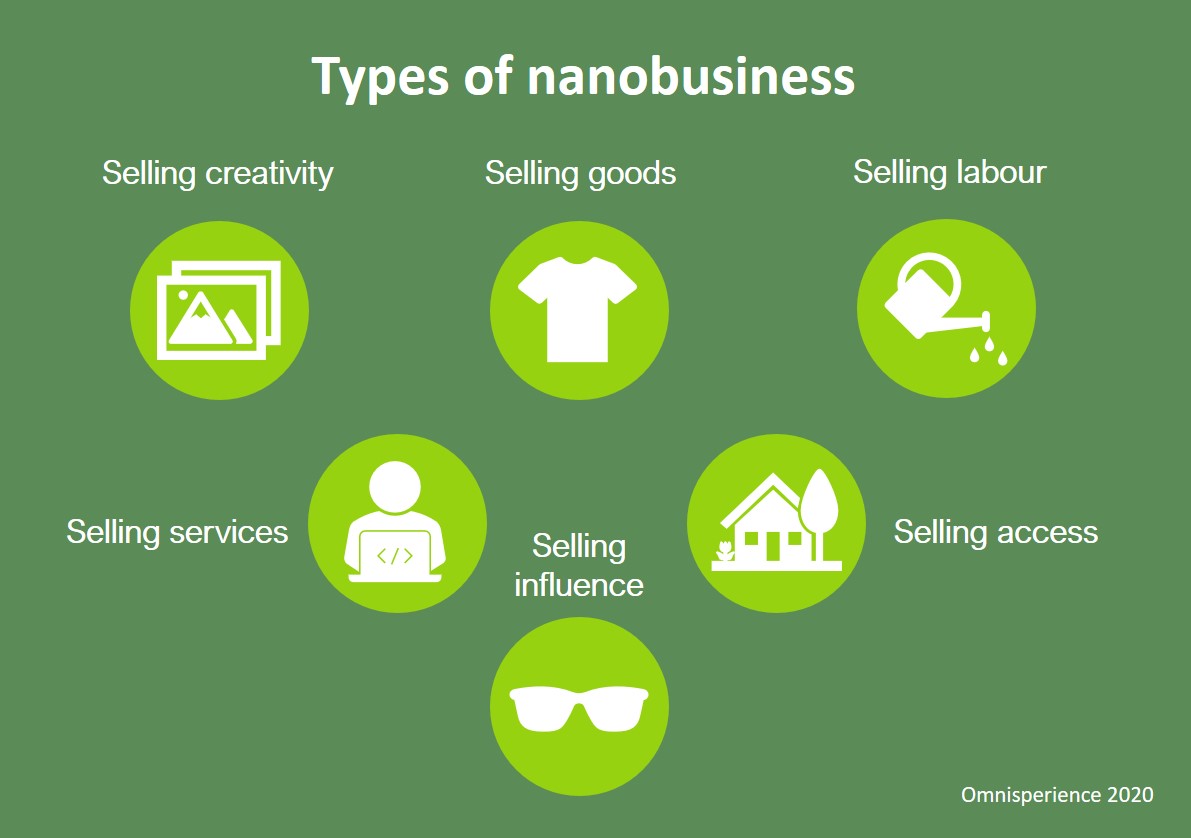The nanobusiness is set to be the biggest B2B phenomenon of the 20s. And if you’re not ready for it, then you risk losing out. In this article we look at what it is, and what the opportunity looks like.
Composition of the business market
At the top end of the business market we have global multinationals and huge public sector contracts, with the rest of the market ranging from large enterprises through small and medium-sized businesses (SMEs) down to microbusinesses. The market is well-defined in Europe, though definitions vary worldwide. In Europe the standard definition of enterprise size is:
- large enterprises – 250+ employees
- medium-sized businesses – 50-249
- small businesses – 10-49
- microbusinesses – 10 employees or fewer
But while this is all well-understood, there is now a new kid on the enterprise block – which sits below even the microbusiness – the nanobusiness.
What is a nanobusiness?
Just as we has SIMs, then microSIMs and finally nanoSIMs, so the nanobusiness is something that is smaller than a microbusiness.
“Omnisperience defines a nanobusiness as a business that employs less than one full time member of staff. It encompasses businesses that sell goods, creativity, services, labour or influence, as well as those that allow the commercial sharing of something that the businessperson already owns.”
The nanobusiness market encompasses all skill levels – from people working as delivery drivers, couriers and taxi drivers, to micro-retailers and those providing highly skilled IT services. The gig economy is part of the nanobusiness market, but nanobusinesses also include those selling goods and services directly including the social economy and sharing economy.
Sizing the nanobusiness market
It’s important to recognise the sheer size of the nanobusiness market. And how quickly it’s growing. For example, according to research by the University of Hertfordshire:
- 4.7 million UK workers (9.6% of the working age population) had worked via an online platform at least once a week, compared to 2.3 million workers (4.7%) three years ago
- 7.5 million people in the UK have worked via a gig economy platform at some point
- nearly two-thirds of workers between 16 and 34 are working via gig economy platforms at least once a week.
In addition to the gig economy, other workers sell professionally or ad hoc on sites such as Ebay and Amazon.
- 280,000 registered sellers trading on Amazon UK in 2017
- 200,000 professional sellers on eBay UK.
In fact, Omnisperience is forecasting that the nanobusiness market will be worth $1 trillion by 2025, and for once we think that might be an underestimate.
What this means for B2B service providers
B2B service providers are losing out because of their old-fashioned way of segmenting the business market, which is becoming increasingly out of step with economic reality. More people are working in microbusinesses than ever before, with 96% of businesses (5.6 million) in the UK having less than 10 employees.
Even more people are now part of the gig economy. A worker may work part-time or full time for a large business, while having an out-of-hours job (which may be entirely unrelated to their main job). Another may be juggling two or three ‘projects’. A third may be dependent on one or more gig economy firms for employment, mixing this with a zero hours contract for a major employer. People are selling a wide range of things – including their skills and creativity – and ICT gives them the platform to be able to do that.
What this underlines is that it’s no longer important how many people a business employs. Instead, B2B service providers need to identify where customers need business services and then align their services to these opportunities.
That means assuming that most consumers now have business needs as well as household needs, rather than believing that all their business needs will be met by the centralised IT department of a large enterprise – which is increasingly no longer the case. For some people work is their new leisure. Instead of thinking that customers need 1Gbit/s speeds simply to stream video, service providers need to be more nuanced to understand that these customers are not passive consumers but creating (and making money out of) videos they upload to YouTube. Understanding the many shapes and forms of the nanobusiness will enable B2B service providers to address a whole host of opportunities that are not currently well addressed.

[…] to B2B customers. This is extremely important for service providers seeking to address the SME and nanobusiness sectors. While there are other ISVs offering Cloud based BSS and OSS, the size and strength of […]
[…] women to stay in work – and expanding our notion of work to include things such as nanobusinesses that are part-time gigs or commercialised hobbies – is, I would argue, a better way […]
[…] has identified an emerging nanobusiness opportunity for ICT firms. In the company’s latest green paper it outlines that this hidden sector of the business market is a huge opportunity for […]
[…] differentiate cloud and MSS providers based on their target customers, which may range in size from nanobusinesses to global […]
[…] Article: Is your business ready to support the rise and rise of the nanobusiness? […]
[…] have even been utilising gig economy workers (see Is your business ready to support the rise and rise of the nanobusiness?) for quite some […]